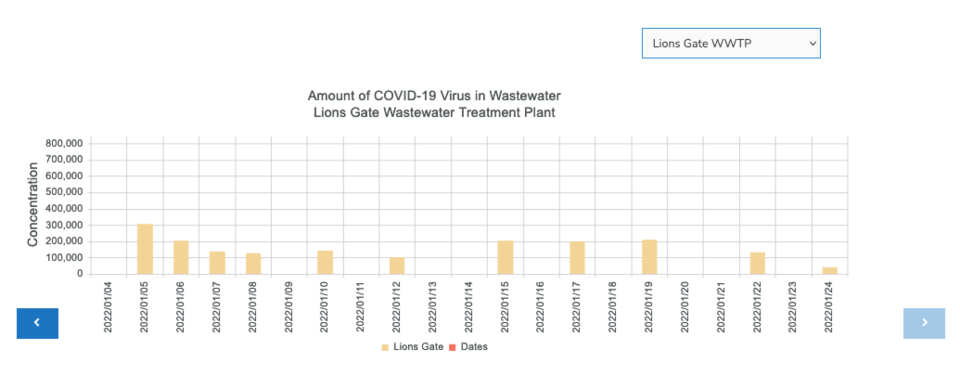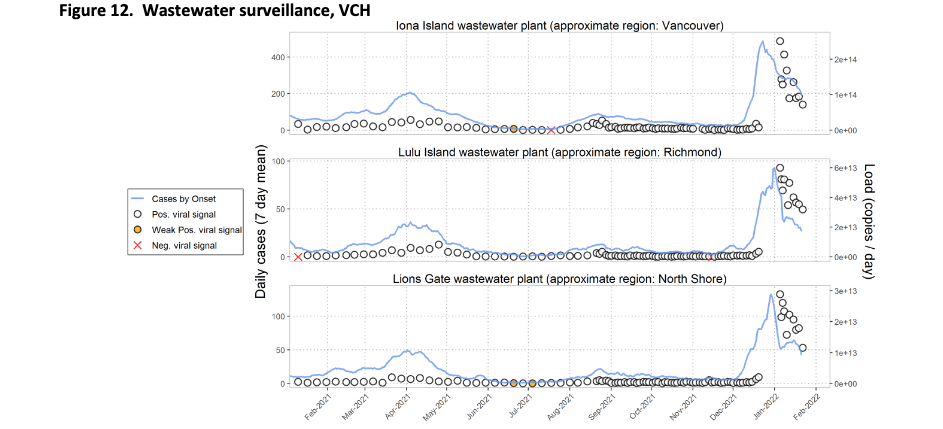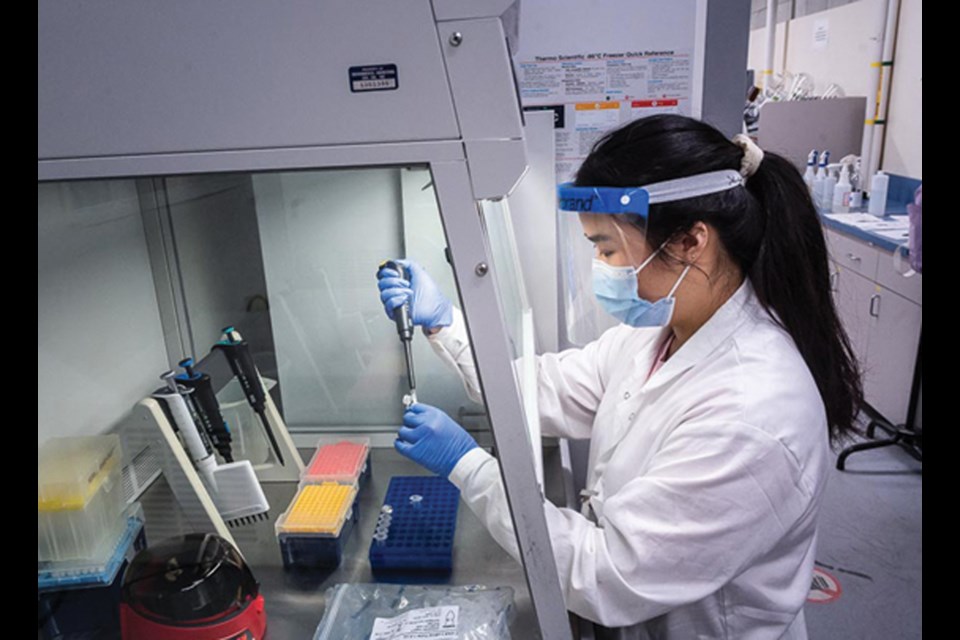Data tracking concentrations of COVID-19 in wastewater from sewage plants around Lower Mainland confirm that the Omicron surge is declining.
Wastewater samples at four of the sewage plants, including the Lions Gate sewage treatment plant on the North Shore, show virus concentrations peaked on Jan. 5. (One in Langley showed a peak on Jan. 17.)
Since then, COVID-19 concentrations have been gradually decreasing across the Lower Mainland.
While concentrations of the virus markers remain high compared to earlier waves of the pandemic, "it's certainly on the downward trend," said Natalie Prystajecky, a microbiologist who heads the wastewater testing program at B.C.'s Centre for Disease Control. "And each week, the load of virus is decreasing."
That’s good news, because with only a small fraction of suspected COVID-19 cases being tested and reported in official case numbers, “It’s one of the only signals we have that’s what happening in the community,” said Ryan Ziels, an assistant professor in the University of British Columbia's department of civil engineering, who has also been among the researchers studying the wastewater trends.
“I do think it’s one of the better indicators right now. We can essentially test one and a half-million people in a big pooled sample.”
Prystajecky said research over the past two years of the pandemic has shown a high correlation between virus particles detected in wastewater and the number of COVID infections in the community.

At the Lions Gate Wastewater Treatment Plan, concentrations of viral particles per litre of wastewater peaked in the first week of January, with 333,000 parts per litre. In mid-January, levels hovered around 200,000. On Jan. 24, the last time figures were available, concentrations were down to about 40,000 parts per litre, according to data made available by Metro Vancouver’s wastewater tracking site. The pattern was similar at other sewage treatment plants, although concentrations of the virus marker were higher there. The Lulu Island sewage plant, for instance, showed a high of 695,000 parts per litre on Jan. 5. By Jan. 24, the concentration measured 340,000.
According to Metro Vancouver, samples are collected three times a week from untreated wastewater as it runs into the sewage treatment plants. Results are posted once a week, after testing and analysis by the BCCDC.
An even better overall sense of community infection can be found in the daily load tallies, which multiply concentrations of virus particles by the total amount of wastewater flowing through each sewage plant, said Prystajecky.
Data is reported on the BCCDC’s surveillance report. So far, that data also indicates virus levels have peaked and are going down, said Prystajecky.

Ziels and his team of researchers have also used wastewater samples to extract information about which variants of COVID-19 are appearing in local populations.
Early mid-December, for instance, the Omicron variant first appeared in wastewater samples from both the Lions Gate and Lulu Island wastewater plants, serving the North Shore and Richmond, at a time when infection rates on the North Shore were suddenly spiking and genomic sequencing was also picking up increasing cases of the variant. Soon, Omincron was picked up in all wastewater from the Lower Mainland.
So far, it's not clear how well wastewater samples will be at picking up the new "sub-variant" of Omnicron, dubbed BA.2. "That's something we are interested in exploring," said Prystajecky.
One of the issues is BA.2 is much more similar to Omicron that Delta was, and therefore more difficult to detect, said Prystajecky. Small changes are also harder to see when there are large amounts of COVID-19 showing up in wastewater samples.
Data from wastewater samples has continued to reflect the limited information available from PCR testing. According to those official tallies, case counts on the North Shore recently included 252 new infections between Jan. 25 and Jan. 31, down from a high of more than 900 cases in the first week of January and more than 400 cases in mid-January. Because testing is only available to a very limited number of people, including those most at risk for complications of COVID-19, that number only includes a small subset of actual infections, but can be used to gauge general trends.



